How To Fix A Radiator Bleed Screw
Cost to Remove and Replace a Radiator
Looking to replace your radiators?
If you're looking to remove a radiator then expect to pay around £80-£120, whereas the average cost of replacing your radiator with a new one is £200.
Remember, different styles will be more expensive.
Steel, cast iron, and mirrored radiators are among the most expensive and will cost upwards of £700 for large designer models.
On the other hand, a basic single panel central heating radiator will start at around £20 to £40 without the installation.
This articles covers everything you need to know about removing and replacing radiators, including new radiator costs, additional radiator replacement costs and a step by step guide on how to replace a radiator, as well as plenty more DIY radiator installation tips.
Interested? Read on to find out more.
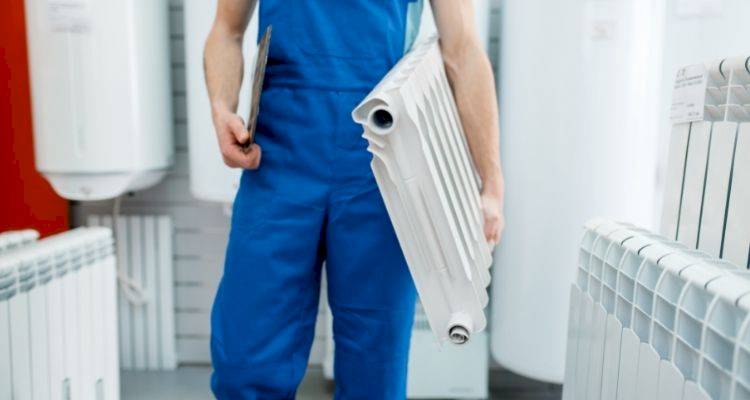
Average Cost of Removing and Replacing a Radiator
Depending on the complexity of the job and radiator type, it will usually take around: 2 hours
£200
Table of Contents
- How Much Does It Cost to Remove and Replace a Radiator?
- Removing and Replacing Radiator Prices
- Supply Costs Only
- Additional Costs
- Labour Costs and Timescales
- Cost Factors of Removing and Replacing a Radiator
- Reasons to Remove and Replace a Radiator
- Things to Consider When Installing a Radiator
- DIY Radiator Replacement & Removal
- Cost of Moving Your Current Radiator
- Radiator Maintenance and Repair
- Hiring a Radiator Expert Checklist
- FAQs
- Sources
How Much Does It Cost to Remove and Replace a Radiator?
Radiators are an essential item in modern houses to distribute the heat generated from the boiler around your home.
But sometimes, they can stop working and may need to be replaced.
The cost of replacing a radiator with a like for like replacement will vary depending on the size.
Costs range from:
- £230 for a small radiator replacement
- £300 for a medium radiator replacement
- £370 for a large radiator replacement
It is an easy job for a heating engineer and relatively straightforward for a DIY enthusiast too.
However, you may also want to add a thermostatic radiator valve while you are at it.
The main thing to remember is...
Buy a new radiator that is the same size and has the same pipe fittings as the one you are taking out.
You may also want to consider installing an additional radiator to deliver more heat to the room if you find the room is often too cold.
The prices charged for installing an additional radiator by plumbers will vary according to the amount of pipework required and the complexity of the job.
Don't worry though!
Replacing a radiator is a fairly routine job for plumbers and should be completed in just a couple of hours or so.
Another very common reason for removing and replacing a radiator is when decorating.
Accessing the wall behind the radiator for tiling, painting or wallpapering is much easier with the radiator removed.
Once you have identified that you need to remove a radiator, you need to determine the cost that is going to be involved with the whole job.
- Prices from smaller local tradesmen range from £150 to £200
- Larger companies with national coverage charge £175 to £300
Removing and Replacing Radiator Prices
Below is a table highlighting the different costs that may be involved in removing and replacing a radiator and the prices that you should expect to pay.
Please use the measurements below to determine whether your radiator is a small, medium, or large radiator:
- Small – (H)40cm (W)60cm
- Medium – (H)60cm (W)100cm
- Large – (H)80cm (W)180cm
| Job Type | Duration | Average Cost |
|---|---|---|
| Remove Small Radiator | 1 hour | £80 |
| Remove Medium Radiator | 1-2 hours | £100 |
| Remove Large Radiator | 2 hours | £120 |
| Replace Small Radiator | 1 hour | £150 |
| Replace Medium Radiator | 1-2 hours | £200 |
| Replace Large Radiator | 2 hours | £250 |
| Install Additional Small Radiator | 2-3 hours | £250 |
| Install Additional Medium Radiator | 3-4 hours | £300 |
| Install Additional Large Radiator | 4-5 hours | £350 |
| Bleed a Radiator | 30-60 minutes | £100 |
Supply Costs Only
Are you thinking about installing a new radiator yourself?
If that is the case, you need to look at the price of radiators without the installation cost.
There are many different types of radiators, including:
Central Heating Radiators
Central heating radiators use corrugated panels to radiate heat out into the room.
You can get single-panel styles of central heating radiators for small rooms, or you can get double-panel ones for larger rooms as these produce more heat.
What are the benefits of central heating radiators?
- Highest heat output
- Greatest heating efficiency
- Compact radiator styles for small spaces
So, what about the cost?
- Small central heating radiators -£20-£40
- Medium central heating radiators - £40-£80
- Large central heating radiators - £85-£120
Column Radiators
Are looking to add or retain a little bit of period charm to your home?
If so, a column radiator might be the perfect option for you.
Here's why.
- They offer a traditional aesthetic
- Originated from the Victorian-era
- Modern models offer greater heat efficiency
The cost of a column radiator will vary depending on size, for example:
- Small column radiators -£115-£190
- Medium column radiators - £140-£230
- Large column radiators - £320-£380
Designer Radiators
Radiators can sometimes ruin the aesthetic of your home, so why not try a stylish and contemporary designer radiator?
A designer radiator can bring a wide range of benefits to your home, including:
- Space-saving technologies
- Amazing designs
- Dual-purpose radiators that double up as mirrors, memo boards, and more!
Here are the costs of different sized designer radiators:
- Small designer radiators - £180-£300
- Medium designer radiators – £200-£450
- Large designer radiators - £350-£500
Vertical Radiators
Do you have limited wall space?
If so, you should opt for vertical radiators which:
- Fit perfectly into small wall spaces, meaning you can heat more of your home when you previously wouldn't have been able to.
- Come in a wide range of styles and colours.
- Work well with bold designs
The price of vertical radiators depends on size, for example:
- Small vertical radiators -£100-£200
- Medium vertical radiators -£150-£250
- Large vertical radiators - £230-£575
Towel Radiators
With a towel radiator, you can dry your towels whilst also adding some extra warmth into your bathroom.
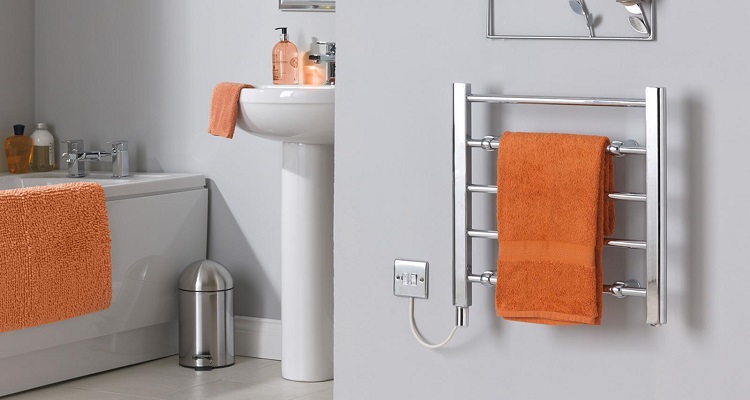
The main benefits of towel radiators include:
- Easy towel access when getting a shower/bath
- Stylish designs
- Space-saving solutions
How much does a towel radiator cost?
- Small towel radiators - £25-£150
- Medium towel radiators - £50-£300
- Large towel radiators - £75-£500
Cast Iron Radiators
Cast iron radiators are well suited to older period homes
The advantages of cast iron radiators include:
- They keep warmer for longer after turning your heating of
- Great radiators for large rooms with high ceilings.
- Provides a good contrast with contemporary décor.
Cast iron radiators are available in various sizes, including:
- Small cast iron radiators – £120-£200
- Medium Cast iron radiators – £250-£595
- Large Cast iron radiator - £490-£750
Flat Panel Radiators
Are looking for a very easy and relatively fast way of changing your radiators?
Then, a flat-panel radiator is the perfect option for you, because:
- They are designed to be light and compact.
- They can fit into almost any room without taking up a hefty amount of space.
Flat panel radiators costs range from:
- Small flat panel radiators – £180-£250
- Medium flat panel radiators – £200-£225
- Large flat panel radiators - £220-£250
Stainless Steel Radiators
Stainless steel doesn't corrode or rust as some other metals do, and so a stainless steel radiator is guaranteed to last a long time.
The pros of stainless steel radiators, include:
- Efficiency
- Low-maintenance
- The various options and finishes available
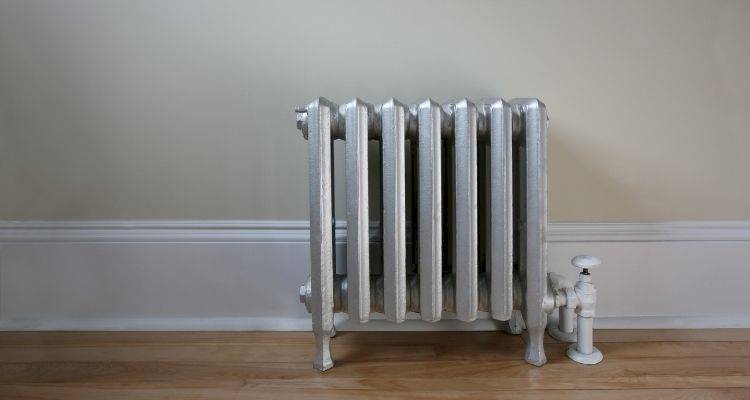
Stainless steel radiators cost approximately:
- Small Steel Radiator – £175-£275
- Medium Steel Radiator – £250-£350
- Large Steel Radiator - £350-£580
Mirror Radiators
To create the illusion of more space, you should consider investing in a mirrored radiator.
What are the advantages of a mirror radiator?
- The double up as a stylish décor item
- Create the perception of a bigger space
- Bounces natural light around the room
Mirror radiators cost around £200-£650
Space Saving Radiators
A space-saving radiator is a perfect option if you want to make the most of the space in your room.
Space saving radiators are great because:
- They can fit into narrow spaces
- Can easily blend into the décor
- They can wrap around corners
The costs of different sized space saving radiators:
- Small Space saving radiators – £200-£250
- Medium Space saving radiators – £550-£675
- Large Space saving radiators - £195-£350
Additional Costs
Below are some of the additional costs that may become involved with replacing a radiator.
- New Boiler (supply and installation) - £900-£3500
- Water Tank (supply and installation) - £150 - £600
- Pipework (supply and installation) - £800 - £1000
- Power Flush - £350 - £650
- New Thermostat - £150-£280
- TRV Radiator Valve - £5-£39
- Home Insulation (professional loft insulation) – £300-£350
- Double-Glazing Installation - £2500-£6500
Labour Costs and Timescales
Below are the costs you should expect to pay for labour to remove and replace a radiator in the UK.
Like-For-Like Radiator Installation
For a simple like-for-like radiator installation, you can expect a professional tradesperson to charge under £500 for the whole job.
With the radiator cost included, you will be looking at paying around £200-£300 in the South of the UK, and around £150 in the North of the UK.
A radiator replacement should only take a couple of hours. The plumber should bleed and test the radiator system after the installation of the new radiator.
It may also be necessary for them to top up the system with water. This depends on how much water you lose in the process of removing the old radiator.
Additional Radiator Installation
The price for installing an additional radiator in your home will vary depending on the amount of new pipework that is needed and how accessible the existing pipework is.
The cost of fitting an additional radiator will vary depending on who you hire.
For instance...
- A small business or sole trader will cost around £150-£200
- A larger national company may charge £175-£300
Bleeding a Radiator
Bleeding a radiator is a very simple task. With the right tool, you can bleed all of the radiators in your home in under an hour.
However, you can call a professional to do the job for you if you would prefer to have someone else do it.
You should not pay any more than £150 for radiator bleedings. Prices usually range from £75-£120.
Most radiators installations or repair only take a few hours.
However, if you are replacing all of your radiators, you should expect it to take 1-2 days.
Ready to get a price for your job?
Cost Factors of Removing and Replacing a Radiator
There are several factors that may affect the costs involved with removing and replacing a radiator.
Below are some of the main things that could affect the price of your job.
Type of Radiator
The type of radiator that you are installing may greatly affect the cost of the job at hand.
If you are installing a like-for-like radiator, you would be looking at paying a lot less than you would if you are changing the style of radiator installed.
Size of Radiator
Radiators come in a variety of sizes, and this will affect the cost. Depending on the size of the radiator, it may take a plumber longer to install the radiator.
This will also affect the cost as the plumber will charge more for a bigger job.
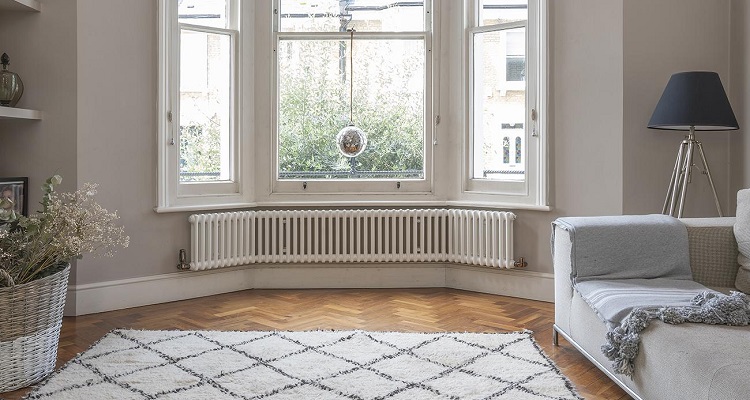
Number of Radiators
If you need more than one radiator removing and replacing, then you will need to factor in the extra costs of the additional radiators, plus the additional costs involved with the labour.
It will take a lot longer for the tradesperson to install more than one radiator, and the cost will increase depending on the length of time that the entire job takes.
New Pipework
If the plumber has to install new pipework into the system to fit your new radiator, this is also going to incur some additional costs.
You will need to think about the price of the additional pipework, as well as the extra cost of labour for fitting the new pipework.
Reasons to Remove and Replace a Radiator
Some of the main reasons why you may need to change a radiator are listed below.
Age – Generally, it is recommended that radiators should be replaced every 15-20 years. If your radiators are getting close to this age range, it's worth taking a look at them and evaluating how they are performing.
Rust – Rust can often occur on the outside of radiators due to their heating and cooling nature. If rust isn't treated right away, it can become a problem and can eventually cause leaking.
Corrosion – Corrosion can occur within your radiator due to sludge which can build up over time. This causes rusting from the inside of your radiator and can eventually lead to leaks.
Blockages – Blockages can be caused by a clog of sludge or rust. This can prevent the radiator from heating up.
Lack of efficiency – A less efficient radiator leads to heat loss which can result in it taking a lot longer to heat the room.
Upgrade – You may wish to upgrade your current radiators for new models.
Leakages – Leakages can occur for a number of reasons and can often be difficult to fix.
Things to Consider When Installing a Radiator
When replacing a radiator, you should think about the boiler capacity and efficiency. If the boiler is more than 10 years old, it will probably be worth replacing the boiler too.
Replacing your boiler is an expensive investment and you may need some help choosing the right boiler, with so many options out there, all with there own benefits and drawbacks.
Another related job is fitting TRV valves for more efficient control of room/radiator temperature. Thermostatic Radiator Valves (TRV) control the temperature of the radiator by sensing the room air temperature and automatically opening and closing the water flow to the radiator to maintain a pre-set temperature.
TRV's are now a requirement as part of building regulations in homes, but many older properties still do not have them. Check with your installer to make sure you have the correct valves.
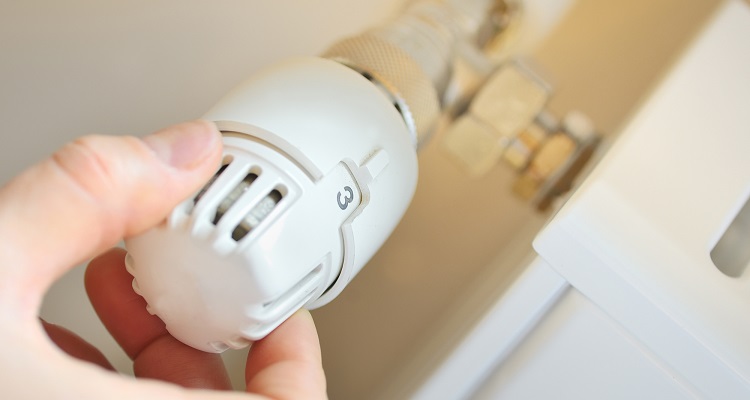
Additionally, there is no point in having efficient radiators if your house is poorly insulated. Insulate the loft to at least 150mm of modern insulation and look into double glazing if you do not have it already fitted.
Finally, you need to consider if you really do need a new radiator of if there is an issue with your system. It may be worth getting a power flush through your central heating to remove all the sludge and debris that builds up over time.
DIY Radiator Replacement & Removal
It is always recommended to seek professional advice or hire a tradesperson to carry out the job of removing and replacing a radiator if you are unsure of how to do so or if you aren't confident in your plumbing skills.
Although hiring a professional does cost money, you may find that you save a lot of time, effort, and even additional costs by going down the professional route. This will also prevent any problems further down the line.
However, if you have previous plumbing experience, then you may be able to complete the job successfully as long as you have the right tools and skills.
Tools and Materials Needed
- New radiator
- New radiator brackets
- Washing up bowl
- Two adjustable spanners
- Radiator bleed key
- Drill
- Pipe/Cable/Stud detector
- Cloths or rags
- PTFE (thread seal) tape
- Steel wool
- Another person to help
Removing and Replacing Your Radiator
The best way to remove and replace a radiator yourself is to choose a replacement that has identical pipe centres. These are the distance between the two water pipes. This will make the job a whole lot easier.
If you choose a radiator that is a different shape or size, then you will need to drain the system and make some alterations to the pipework.
Step One
The first step you need to take when removing and replacing a radiator is to shut off the valves at either end.
Turn the manual valve clockwise until it doesn't turn anymore.
If your valve is a TRV, turn it until it is in the off position.
If you have a lockshield valve on one end, you simply need to pull the plastic shield off and then turn the shaft clockwise with a spanner. Be sure to count the number of times you turn the spanner as this will ensure that you can set your radiator to the same flow rate.
Step Two
Place a washing up bowl underneath the valve so that the water can be caught as it begins to drain.
Loosen one of the cap nuts that connects your valve to the radiator using your adjustable spanner. You may need to use the second spanner to secure the valve body to prevent it from turning and ruining the pipework.
Step Three
Locate the bleed valve at the top of your radiator and open it. Then, loosen the connecting cap nut between the radiator and the valve to drain the water away. Make sure to catch the draining water in the washing up bowl.
If your radiator is quite old, the water inside may be quite dirty or sludgy. Keep this in mind as you may need to wipe up any spillages using your cloth or rags.
If your washing up bowl isn't deep enough to collect all of the water, just tighten up the connecting cap nut again, pour the water away, and then re-start the process until it is fully drained. When there is no more water coming out, disconnect the valve located on the opposite side of the radiator.
Step Four
If your radiator is a large one, you may need someone to help you do this step.
Lift your radiator away from the wall mounting brackets and then tip it to drain any remaining water out. Once all the water has stopped exiting, stuff the outlets with some rags or tissue to stop them from leaking.
If the brackets that are currently on your wall don't suit your new radiator, remove them. You will then need to replace them with appropriate ones.
If you have to drill into the wall to do this, always be sure to check what is behind the wall. You don't want to accidentally drill into a pipe. A digital detector will help you determine what is behind the wall.
Step Five
Carefully remove the valve connectors from your old radiator using a spanner.
Using wire wool, clean the connectors and then wind your thread seal tape between five and ten times around the threads to ensure that a watertight seal is created.
Screw these connectors into your new radiator and be sure to tighten them completely. Then, hang your new radiator on the wall.
Connect the valves to the new radiator once it's on the wall and reset them. Don't forget to check the number of turns you did earlier so that it's on the same settings as the previous radiator. Once this is complete, allow water to enter the radiator.
As this is happening, you will need to open the bleed valve slightly to allow any air to escape. When the water begins to spurt out, close the bleed valve.
Check each of the valves for leaks and then tighten and dry them if needed. Turn your central heating on and keep checking back every now and again for any drips.
To ensure you bleed your radiator correctly, take a look at our how-to guide.
Cost of Moving Your Current Radiator
Most of the time, your house will be built with radiators in the middle of the wall so that the heat distributes evenly around the room. However, this isn't always ideal, and so you may want to move your radiator to a different part of the wall, or to a different wall completely.
Moving a radiator will usually take around 2-3 hours and the cost to move a radiator professionally is around £200.
It is best to leave moving a radiator to a professional as there are many things to consider when moving a radiator such as what is behind the wall and how to move the pipework. It's not a simple job, especially if you don't have great plumbing skills.
Radiator Maintenance and Repair
It is important to ensure that your heating is working efficiently, not just for your comfort, but also for your bank balance. During the colder months of the year, you will need to heat your entire property quickly, and you will want it to stay warm. Knowing how to fix some minor issues and maintain your radiators will help you keep your home warm without having to call out a professional.
You will need a qualified professional to install your central heating system, but maintaining your radiators isn't too difficult.
If you feel cold spots on your radiators, or if they are taking a long time to warm up, the first thing you should try to do is bleed your radiators. This will usually fix any cold spots and will help make your radiators work more efficiently.
If bleeding your radiators doesn't fix the cold spots, it may be an indication of a deeper issue, and you will need to call a professional out to have a look at it.
How to Fix a Noisy Central Heating System
Every boiler has different controls, so be sure to keep your manual in a safe place so that you can always refer back to it. Most central heating faults have quite simple solutions that you can usually fix yourself. If you are in doubt, however, always call in a professional.
How to Fix Creaking Pipes
Creaking pipes can be caused by the hot pipes expanding, or by the pipes rubbing up against the wall, floor, or other pipes.
To fix this issue, try widening the pipe notches in the joists. If you have loose pipes, clip them or pack insulation between the pipes.
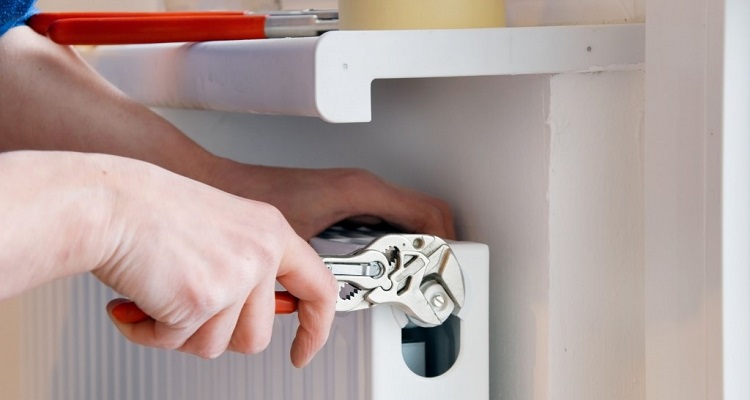
How to Fix Humming Sounds in Pipes
Humming sounds can occur in pipes when the pump speed is too high, or when your pipes are too narrow for the system flow.
How to Fix Rushing Sounds in Pipes
Rushing sounds in pipes are usually caused by air or bubbles within the system.
The best way to fix this issue is the bleed your radiators. If bleeding the radiators doesn't fix this issue, then it is best to call out an engineer to check for a deeper issue.
How to Fix Hissing or Banging Sounds
Hissing or banging sounds can be caused by a faulty boiler or thermostat, or a build-up of limescale in the system.
It is best to call out an engineer to check your system over. They will be able to best determine the issue and will be able to fix it effectively.
If your central heating system is making noises, it is best to treat the issue earlier rather than later as leaving it could lead to further issues down the line.
If you're having repairs or maintenance done this is an ideal time for upgrades. It may be worth upgrading your boiler, radiator or installing a new smart thermostat.
Hiring a Radiator Expert Checklist
Although replacing a radiator can be done as a DIY job, there are many advantages to choosing a professional plumber to carry out the job for you.
A professional plumber will have all the right skills and will be trained correctly on the best practices of the job. They will also usually have many years of experience.
Before choosing a plumber, you should consider the following checklist to help to hire the person for the job.
Below is a list of things that you should consider before hiring a professional to fix and problems with your radiator.
- Is the tradesperson Gas Safe registered?
- Can they offer a warranty on their work?
- How many years of experience do they have fixing radiators?
- Are there any extra fees involved?
FAQs
What's A Corrosion Inhibitor And Do I Need One?
A corrosion inhibitor is a chemical that is added to central heating systems to prevent black sludge from forming in the radiators, pipework, and in the boiler. If you are worried about corrosion, it may be worth thinking about adding a corrosion inhibitor to your heating system.
Do I Need Thermostatic Radiator Control Valves On My Radiator?
You don't need them, but they are highly recommended as they allow you to set the temperature required for each particular room, allowing better control of the heating system and saving you money on heating bills.
Where Should I Position My Radiators?
In modern homes, the position of radiators is not that important; however, in older homes, you should put radiators in the coldest part of the room, which is normally under a window. Ideally, you should have one radiator for every four metres in a room.
Do Cast Iron Radiators Take Longer To Warm Up Than Standard Radiators?
Yes, they do, but they also stay warm for longer after the central heating has been turned off. Cast iron radiators are becoming more popular amongst heating engineers and architects as they tend to warm the fabric of the building more which helps to reduce damp and condensation.
Why Is My Radiator Hot At The Top And Cold At The Bottom?
This usually means that the radiator is receiving an insufficient flow of water. This is often due to a blockage or pockets of oxygen in the system that needs venting. If you know how to bleed the radiators, you can try this yourself to clear any air. Otherwise, you should contact a heating engineer to investigate further.
Sources
https://www.npower.com/help-and-support/guides/how-to-bleed-a-radiator
https://www.diy.com/ideas-advice/how-to-fix-problems-with-radiators/PROD_npcart_100309.art
https://www.dripfix.co.uk/helpcorrosioninhibitor.aspx
https://www.bestheating.com/info/how-to-replace-a-radiator-a-best-heating-guide
Last updated by MyJobQuote on 16th June 2021.
How To Fix A Radiator Bleed Screw
Source: https://www.myjobquote.co.uk/costs/remove-and-replace-a-radiator
Posted by: ayalasafteph.blogspot.com

0 Response to "How To Fix A Radiator Bleed Screw"
Post a Comment